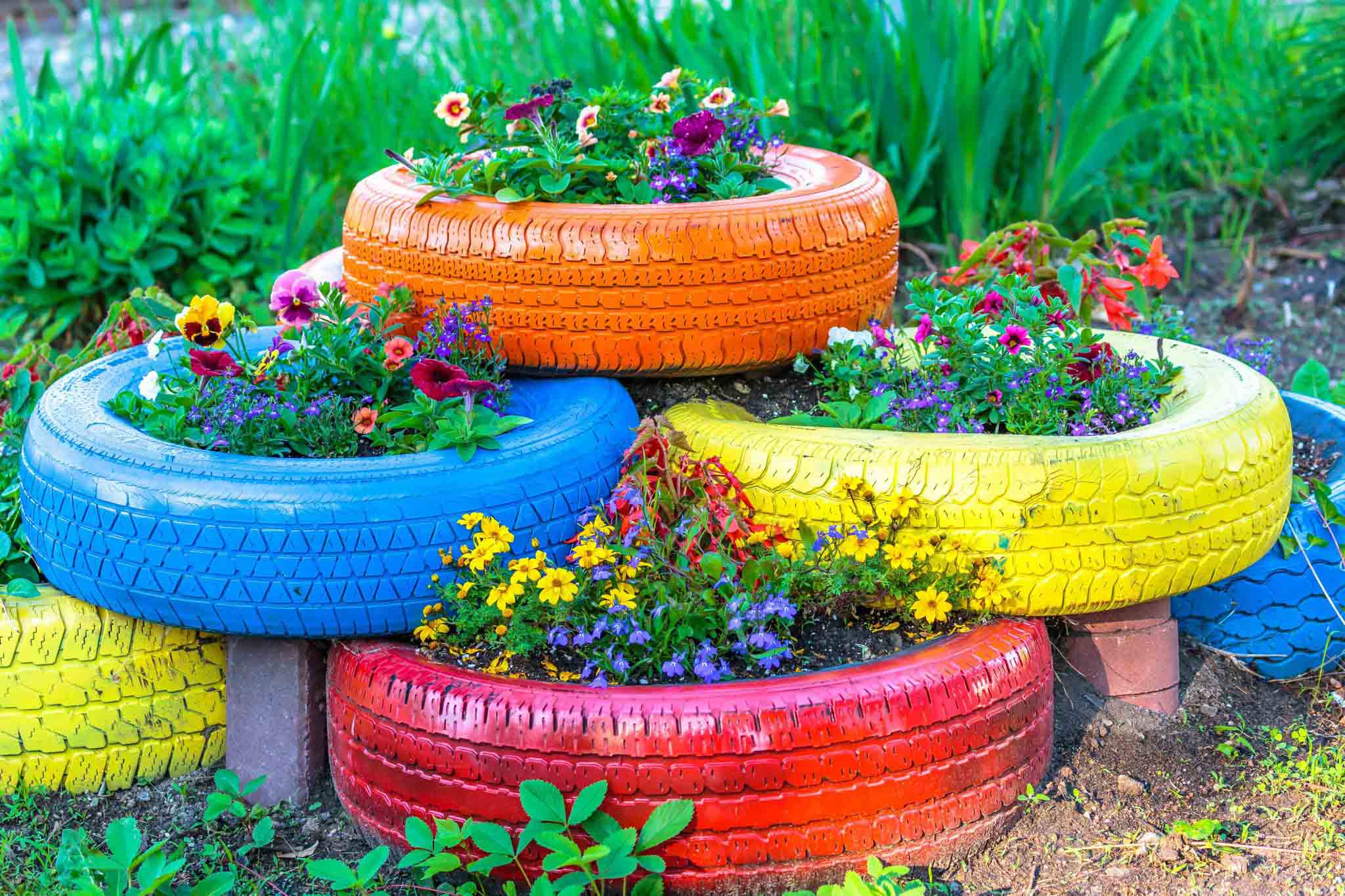Redesigning a backyard has benefits beyond aesthetics since it allows people to use repurposed materials in an environmentally responsible way. These choices can reduce waste, limit the use of novel materials, and often bring a unique aesthetic to the outdoor space. People have the opportunity to create stunning, ecologically conscious spaces with sustainable backyard design.
Using recycled materials does not necessarily mean sacrificing quality or even style. Compared to mass-produced goods, used goods typically have a sense of craftsmanship and history. Whether the goal is to make the space more functional, more comfortable, or more aesthetically pleasing, recycled materials may be used in practically every area of the backyard.
Selecting Appropriate Recycled Materials
The ability to discard what can be reused is the first step in the recycling process. Repurposed pallets, repurposed bricks, repurposed metal, and deconstructed building materials are all popular for outdoor applications. These are appropriate for use in raised beds, garden borders, furniture, and even decorative components because they can be created to be durable and adaptable.
These resources can be found just as simply by searching online markets, local reuse centers, and salvage yards. In many towns, there are also donation programs where some building supplies are available for free or at a discounted price. When homeowners choose to repurpose these materials, they also contribute to the circular economy and reduce the need to generate new resources.
Making Buildings Out of Recycled Wood
Because of their worn appearance and solidity, reclaimed wood is particularly helpful for remodeling garden sections. Benches, tables, planter boxes, and even larger structures like pergolas or shelters can be built. Older wood has a rustic vibe due to its worn appearance and patina, which enhances the backyard’s natural setting.
For the reclaimed wood to be safe and long-lasting, it must be properly cleaned and cared for. Sanding the rough edges, pulling out the nail, and sealing it are ways to prepare the wood. The extra work results in unique constructions that are both ecologically conscious and functional.
Using Repurposed Elements in Design
More than the structures and furniture, repurposed materials can be used to enhance a backyard’s aesthetics. Broken tiles, used plates, or chunks of concrete can be used to create mosaics on garden walks or walkways. Glass jars or wine bottles can also be repurposed as lighting fixtures, while old metal can be used to make vines or garden decorations.
A privacy fence panel constructed from recycled materials, such as recycled boards or mismatched wood slats, can be a great and long-lasting option for protecting an outdoor space. Similarly, a louver wall made from slatted panels or old shutters can offer privacy and air circulation while making use of available resources.
Enhancing Garden Use With Repurposed Equipment
The garden itself has access to a variety of repurposed materials. Using metal bins or plastic boxes, for example, can be transformed into planters. Herb vertical gardens can be created by attaching old gutters to the walls. It is possible to transform damaged ladders or bed frames into trellises or supports for climbing veggies and vines.
Using repurposed materials in the yard not only saves money compared to purchasing new ones, but it also encourages creative gardening practices. Many homeowners find that once they start thinking in this way, they start to see more uses for items that they would have otherwise thrown away. This shift in perspective encourages a more cost-effective and ecologically responsible approach to remodeling the house.
Using Repurposed Elements to Preserve Style and Coherence
Utilizing recycled materials has several advantages, but it’s important to remember that opinions should be somewhat united. To create a balanced appearance, the various elements can be combined using a single hue (palette or design style). Homeowners can also embrace the inherent variety that comes with age and usage, or they can set items aside to be painted or stained to match.
Adding recycled materials to an existing design offers the opportunity to customize a backyard in a way that would encourage greater individuality or creativity. The setting becomes a hand-picked arrangement of items with a purpose and a story, rather than a catalog design.
Because more individuals are looking for ways to cut waste and make environmentally beneficial decisions, eco-friendly backyard projects are becoming more and more popular. The trend’s main component is recycled materials, which offer countless possibilities for imaginative and sustainable design. By using what is easily accessible and creating beautiful and useful outdoor spaces, homeowners can reduce their environmental impact.
Carefully designing the backyard and considering how to reuse items makes it more than just an addition to the house; it’s a way of living. The end result is a section of a garden border, louver wall, or privacy fence panel with basic functionality.



